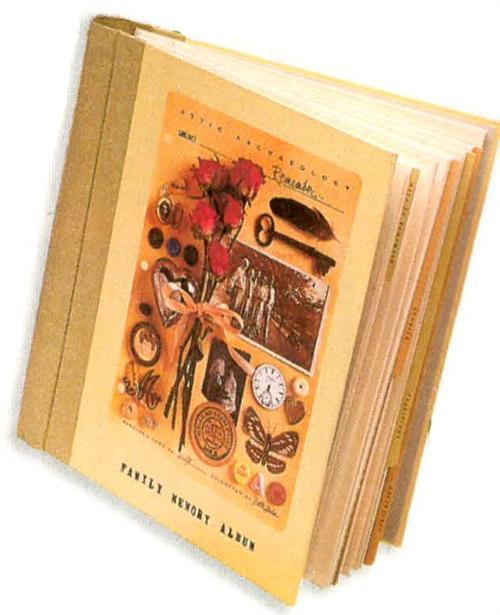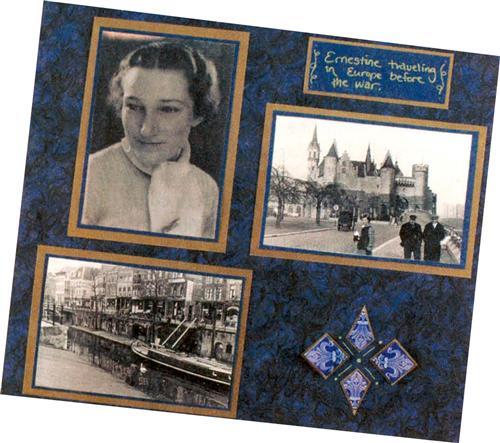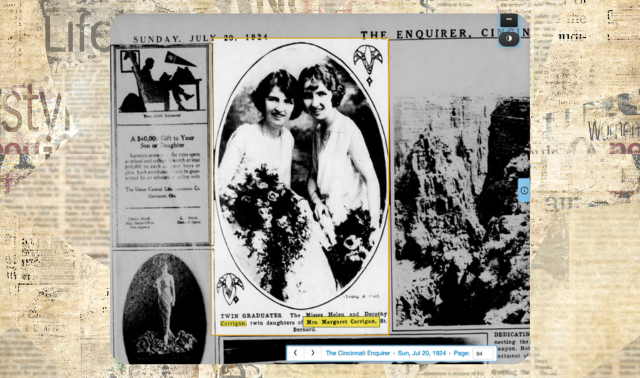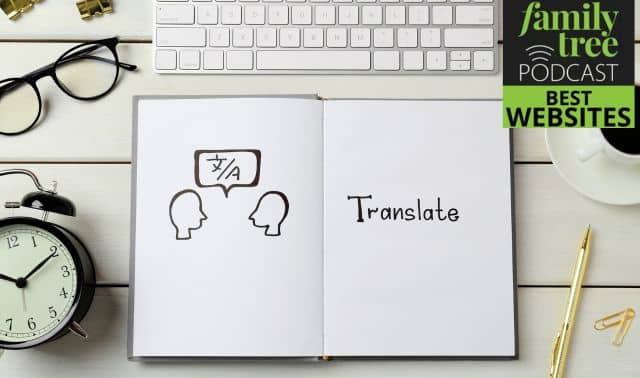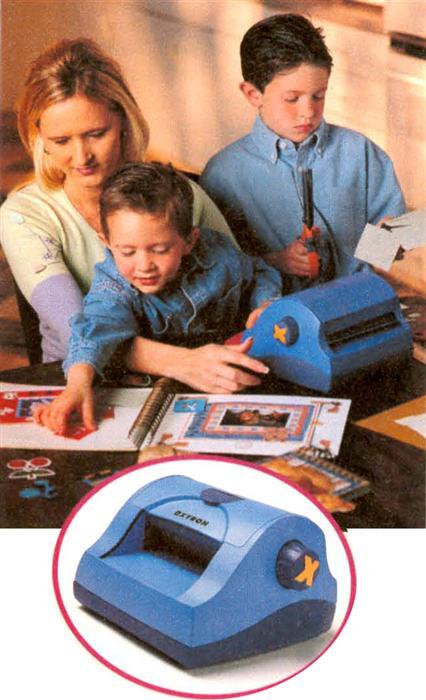
Scrapbooking adhesives come in every imaginable form — liquid, gel, stick and tape. Here are two new ones that stand out because they’re easy to use and make minimal mess. Whatever type of adhesive you choose, use just the necessary amount, don’t permanently mount irreplaceable photos, and keep your hands and tools clean to avoid getting glue on the front of a photograph.
Xyron 500 Sticker Maker
This handy machine lets you turn anything narrower than 5 inches — including punches, die cuts and even photos — into a sticker. Insert the sticker-to-be, turn the handle and a roller applies acid-free adhesive to the back without bending it or applying heat. (Use an X-acto craft knife to easily lift tiny adhesive-coated punches.) It won’t show through vellum because the entire piece is coated. A starter set that includes the Xyron 500, a cartridge of permanent adhesive and an idea book costs $34.99. (800) 793-3523, <www.xyron.com>
3-M Scotch Double-Stick Adhesive Pen
With slight pressure on the roller tip of this disposable pen, acid-free gum adhesive detaches from its tape backing and attaches to your photo. A narrow tip makes for easy application on small paper pieces, and stuck-on items are relatively easy to remove if you change your mind. The pen works best if you firmly pull die tip forward as you finish one application to break the gum adhesive, leaving enough on the pen tip to start the next application.
THE YEAR IN PICTURES
Use your scrapbooking supplies and extra photos to make a meaningful gift your loved one will enjoy all year long: a calendar. Start with a blank calendar from a scrapbooking store, make your own (this one is folded 11×17-inch sheets of paper) or slide finished layouts into page protectors and bind them. You can also create calendar pages with many computer programs or draw them by hand.
RECORD KEEPER
Photos are an essential part of scrapbooking, but they can’t say everything. The Family Memory Album (Chronicle Books) will help you fill in those gaps. Similar to a diary but with more structure, the book has a calendar section for special dates and sections of acid-free blank pages for writing family stories, holiday traditions, adventures and vacations. Glassine pockets hold photos and other mementos. The album can stand on its own as a family record or serve as an important supplement to your scrapbook. (415) 537-3730, <www.chroniclebooks.com>
TEA TIME
Tea bag folding, the paper art with a funny name (it comes from the medium used by the art’s Dutch inventors), has scrapbookers everywhere cutting and creasing small, decorated paper squares. Tea Bag Folding Papers from Hot Off the Press shows you how to fold 1- to 1½-inch squares into kites, diamonds and triangles, then assemble them into intricate stars and borders like the one below. The $6.95 book includes all the acid-and lignin-free squares you need to complete 10 projects. (503) 266-9102, <www.paperpizazz.com>
BACK IN BLACK AND WHITE
Black-and-white photography has staged a comeback in popularity, and film companies are responding with more choices for the amateur photographer. So go ahead and experiment, keeping these hints in mind:
? The timeless look of black and white is great for portraits. Get close and fill the frame with your subjects, as in the photo below, to capture expressions. Color photos tend to be more playful and may be better for fun, active subjects, such as children at a birthday party.
? On black-and-white film, colors of the same intensity, such as a medium blue and medium green, will show up as similar shades of gray. Your subjects will stand out best if they are significantly lighter or darker than the background, like the girls in this shot.
? If you’re worried you won’t like your black-and-white pictures, ask for doubles from someone who’s using color film. Or take color and have your favorites developed in black and white.
? Although black-and-white images generally fade more slowly than color, they’re printed on the same resin-coated paper, which deteriorates at the same rate. For maximum longevity, have special black-and-white photos printed on fiber-based paper.
SCRAP SPEAK: “PAPER PIECING”
A page embellishment, such as a flower, wedding cake or baby bottle, created by cutting pieces of paper and gluing them together. Patterns, available in many scrapbooking idea books, are especially helpful with paper piecing.
From the February 2001 issue of Family Tree Magazine

